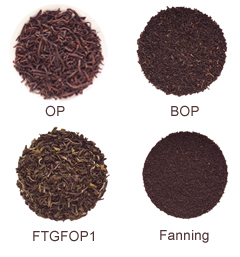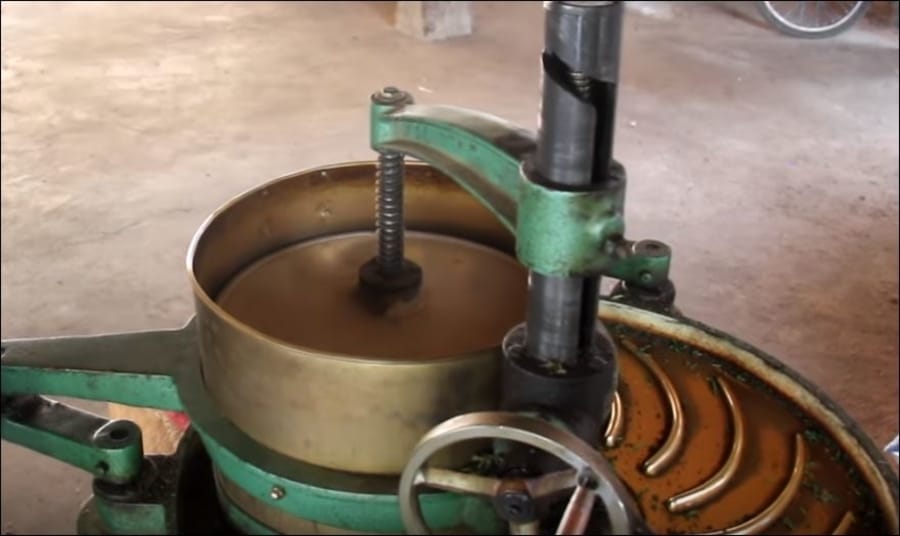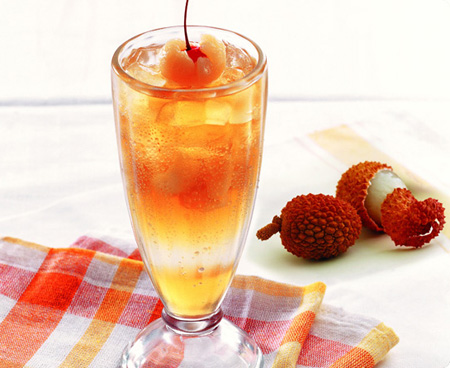Loose leaf tea OP black tea or tea bag broken leaf tea, which grade is higher? What's the difference between loose leaf tea and tea bag?
Once the tea is made, the tea will be graded according to its physical characteristics, including the size and color of the tea. Tea grades vary greatly from country to country and from type to type. It is important to know that tea grading does not reflect the quality of tea brewing (with the exception of Taiwan graded tea). Indian black tea is constrained by the most structured and extensive grading system.
The basic term used in Indian and Ceylon black tea grading is Orange Pekoe (pronounced PECK-oh) or OP. The word "Pekoe" comes from the Chinese word "Bai Hao", which means white tip and refers to the white fluff found on the bud leaves. The word "Orange" has nothing to do with the taste or smell of orange, but it may refer to the Dutch Orange family, the Dutch royal family in the early European tea trade. In addition to the OP name, additional letters are usually assigned to describe the various characteristics of the leaves. Black tea is divided into four categories: whole leaf tea, broken leaf tea, fan tea and dust tea, each of which is described as follows:
Whole-leaf OP- orange peel tea: the basic term for whole-leaf tea. OP contains longer, pointed leaves that are larger than FOP and are harvested when the terminal buds open into leaves. OP usually does not contain prompts. FOP- multi-flowered orange white tea: FOP tea is made from the end bud and the first leaf of each bud. FOP contains tender leaves and buds, also known as tips (a symbol of high-quality tea). GFOP- Golden Flower Orange Pekoe: FOP with golden tip. The golden tip ratio of TGFOP- peel golden flower orange Pekoe:FOP is higher than that of GFOP. FTGFOP- 's best Tippi Golden Blossom Orange Peco: very high quality FOP. SFTGFOP- Top Tippy Golden Blossom Orange Pekoe: very high quality FOP with many golden tips. The number "1" is usually added at the end of the description to indicate high-quality tea (such as SFTGFOP1).

The broken leaf grade term "broken orange white hair", or BOP, is used to describe large leaf fragments. The same grading term for OP tea also applies to BOP tea (e.g. TGBOP=Tippy Golden Break Orange Pekoe). BOP tea retains most of the qualities of whole-leaf tea or OP tea and is usually used to make mixed tea. Broken tea is a leaf fragment smaller than BOP grade and is often used in tea bags. Tea powder is usually the residue of the grading process (after removing OP, BOP and fans). It is usually used in ready-to-drink (RTD) drinks such as bottled iced tea.
What is the difference between loose leaf tea and tea bag and loose leaf tea? As it turns out, quite a lot. Keep our tea loose without additional packaging materials, and maintain a single service packaging waste logistics. In addition, it also gives you a chance to see beautiful tea, so that every cup is worth it! Both loose-leaf tea and tea bags start with the leaves of the same plant, tea tree. However, manufacturing methods may vary greatly. Tea can be processed by either orthodox or CTC methods. Orthodox production is used to produce the leaf tea we provide at Arbor teas, while CTC produces tea bags mainly for the mass market. Traditional production methods, whether by hand or by machine, can usually maintain the integrity of tea. On the other hand, CTC manufacturing (or "crushing, curling and tearing") uses machines to chop, chop, or crush leaves. Both methods can produce high-quality tea, but traditional methods are considered more "traditional". As a result, the flavor and aroma of tea are usually more complex. The tea made by CTC is usually a very small piece, brewing faster and more astringent.
Important Notice :
前街咖啡 FrontStreet Coffee has moved to new addredd:
FrontStreet Coffee Address: 315,Donghua East Road,GuangZhou
Tel:020 38364473
- Prev

Comparison of the differences between two traditional processing processes of black tea the difference in aroma and taste between CTC and traditional methods
Tea-making craft tea (tea trees) is grown in thousands of tea gardens and tea gardens around the world. Although tea is produced in dozens of countries, the five traditional tea producing regions are China, Japan, India, Sri Lanka (Ceylon) and Taiwan (Formosa). Like wine, plant varieties, soil types, altitude
- Next

What kind of tea do litchi black tea, Earl Grey Tea and jasmine green tea belong to? What is the difference among seasoned tea, mixed tea and scented tea?
Seasoned tea: seasoned tea is tea or herbs mixed with liquid spices. This is usually achieved by spraying or dumping liquid on the leaves and distributing them thoroughly. These condiments are ubiquitous in the tea industry and occupy a wide range of tea choices-from the famous Earl Grey Tea (seasoned with bergamot) to more professional apple pie
Related
- What ratio of water temperature and ground does the smart cup method use to press coffee? The difference between brewed coffee and filtered coffee?
- What is the standard process for the purpose of coffee cup testing? What is the difference between hand-brewed coffee and cup testing?
- How to use hand-brewed coffee paragon small golden balls? How does cold coffee lock in the aroma of coffee?
- Is American coffee black? What is the difference between American coffee and drip coffee?
- Unexpected! Well-known tea beverage brand Lele Tea will withdraw from the Zhengzhou market!
- Starbucks enters the fashion and beauty industry?! Netizen: Give me an ice American eye cream
- Why can American refills for free? The difference between Americano and American drip pot coffee
- Being chased out of the rain in front of Starbucks?! Store: Sheltering from rain under umbrellas poses a safety hazard
- The white moonlight has changed?! Lucky launches "Big Winter Pear American"
- Hand-brewed coffee three-stage method, high-sweet and universal brewing method to share! What does the high sweet water level of hand-brewed coffee mean?

